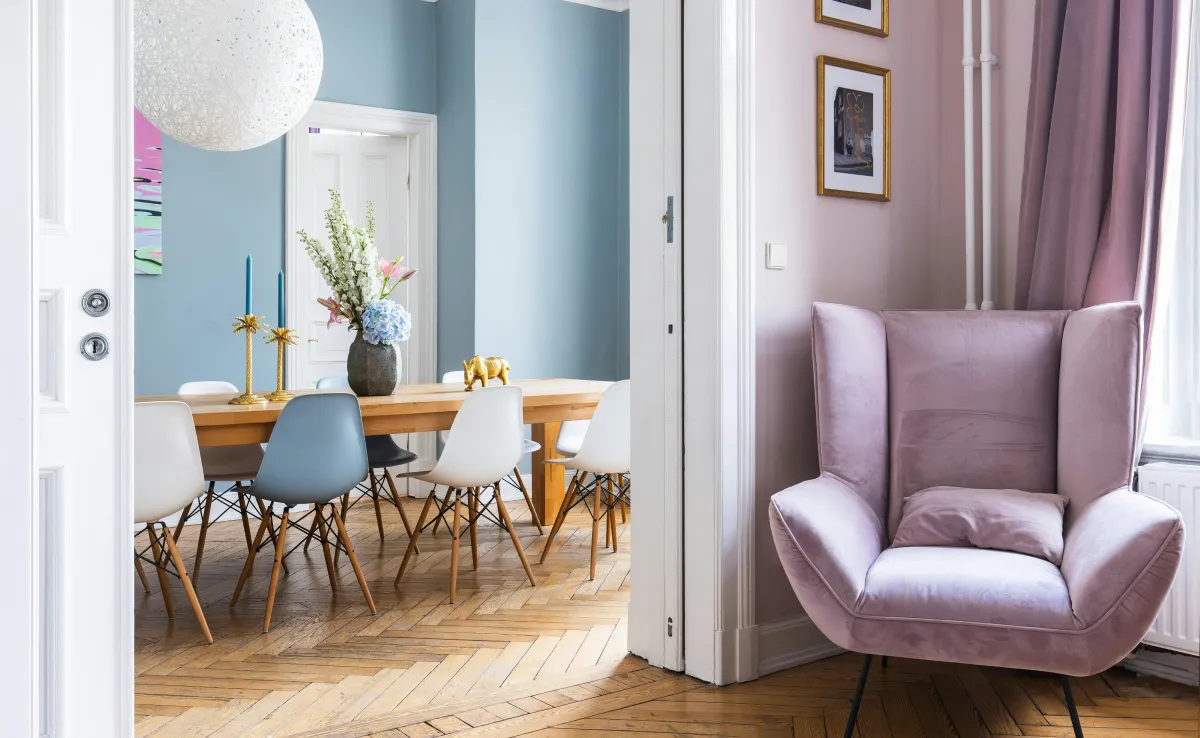
Revamp Your Home With Unique Eco-Friendly Design Options
Sustainable home design is rapidly becoming the standard for modern construction. From materials like bamboo and hempcrete to energy-saving technologies like heat pumps and LED lighting, eco-conscious choices are reshaping how homes are built and renovated. These features don’t just benefit the planet—they enhance comfort, lower energy bills, and boost long-term property value. Whether you're building from scratch or updating an older home, prioritizing green strategies makes a measurable difference. With so many solutions now available, homeowners have more power than ever to build responsibly. Custom Builder Connection (CBC) helps connect you with experienced custom home builders who understand how to implement sustainable features into your unique vision.
Key Takeaways
Green materials like hempcrete, recycled glass, and bamboo support energy savings and natural aesthetics.
Energy-efficient tech, such as smart thermostats and heat pumps, reduces household expenses and environmental impact.
Water conservation techniques, including rainwater harvesting and low-flow fixtures, make homes more resource-efficient.
Innovative trends like biophilic design and modular construction are gaining traction in sustainable housing.
We connect homeowners with builders who can recommend and implement cost-effective, eco-friendly systems.
What Are the Most Surprising Sustainable Materials for Eco-Friendly Homes?

Choosing materials that offer both environmental benefits and aesthetic value is critical. Surprising sustainable materials—bamboo, reclaimed wood, recycled glass, and hempcrete—are reshaping modern construction by lowering carbon footprints and improving energy efficiency.
How Does Bamboo Compare to Traditional Wood in Home Design?
Bamboo is a rapidly renewable resource that grows far quicker than traditional wood and offers excellent strength. Its tensile strength, appealing grain, and natural warmth make it suitable for flooring, cabinetry, and structural elements. Bamboo’s rapid renewability helps reduce deforestation and greenhouse gas emissions. When processed with non-toxic adhesives, bamboo not only serves as a durable, resilient alternative for various climates but also contributes to thermal insulation and better indoor air quality.
What Are the Benefits of Using Reclaimed Wood in Your Home?
Reclaimed wood comes from old barns, factories, or shipping pallets and repurposes materials that would otherwise contribute to waste. Its use reduces demand on new timber resources and deforestation. In addition, reclaimed wood offers unique textures and character that add historical charm and distinctive aesthetics to interiors. Its durability, natural thermal mass, and resistance to decay make reclaimed wood a sustainable choice for accent walls, flooring, and custom furniture projects, while promoting a circular economy through material reuse.
How Can Recycled Glass Be Used Creatively in Eco-Friendly Interiors?
Recycled glass transforms waste into visually striking design elements. Its reflective qualities and durability make it excellent for countertops, backsplashes, tiles, and decorative features. The production of recycled glass consumes less energy than traditional glass manufacturing, thereby lowering carbon emissions. Designers creatively use recycled glass with natural stone or reclaimed wood to produce mosaics and surfaces that brighten spaces with enhanced natural light and support energy efficiency.
Why Is Hempcrete an Emerging Material for Sustainable Construction?
Emerging materials like hemp-based insulation are gaining interest for their low carbon footprint and thermal performance. While not yet mainstream, some CBC-connected builders may offer modern eco-friendly alternatives that align with your home’s sustainability goals. These options can contribute to energy savings and a healthier indoor environment when used in appropriate applications.
Which Energy-Efficient Technologies Can Transform Your Eco-Friendly Home?

Integrating energy-efficient technologies is essential for reducing energy consumption, lowering carbon footprints, and cutting utility bills. Renewable energy sources, smart devices, and advanced HVAC systems help balance comfort and sustainability in modern homes.
How Do Solar Panels Reduce Energy Costs and Carbon Footprint?
Solar panels convert sunlight directly into electricity, reducing reliance on fossil fuels. Typical installations can cut energy bills significantly over time while decreasing greenhouse gas emissions by replacing conventional power sources. They are viable in a wide range of climates, thanks to advancements in photovoltaic technology. CBC can connect homeowners with builders who understand how to incorporate solar energy systems into their home design for optimal performance and long-term energy savings. In addition to promoting energy independence, solar panels often qualify for tax incentives and rebates, especially when integrated with energy storage systems for continuous power supply during outages.
What Are the Advantages of Smart Thermostats for Energy Management?
Smart thermostats learn users’ schedules and preferences, adjusting heating and cooling cycles automatically to optimize energy use. By eliminating unnecessary heating or cooling when the home is unoccupied, these devices can yield energy savings of around 10-15% annually. Their integration with home automation systems allows remote control via smartphones or voice commands, enhancing comfort while reducing energy waste and carbon footprint.
How Do Heat Pumps Compare to Traditional HVAC Systems?
Heat pumps function by transferring heat—extracting warmth during colder months and expelling it in warmer ones—rather than through conventional generation techniques. They achieve efficiency rates of up to 400%, making them far more effective than traditional furnaces or air conditioners. Their dual functionality for both heating and cooling, along with lower maintenance and longer lifespans, makes heat pumps a cost-effective, environmentally friendly solution that minimizes energy consumption.
Why Is LED Lighting Essential for Sustainable Home Design?
LED lighting dramatically reduces energy consumption by using up to 80% less energy compared to incandescent bulbs. With lifespans that exceed 25,000 hours, LEDs help lower both energy bills and greenhouse gas emissions. Their low heat output lessens the strain on air conditioning systems, while design flexibility in color temperature and brightness supports integration with smart home systems and daylight sensors. Their versatility and performance have made LED lighting the preferred choice for sustainable residential home projects. CBC helps homeowners connect with builders who prioritize energy-efficient solutions in custom construction!
What Water Conservation Techniques Can You Implement at Home?

As water scarcity becomes a growing concern, adopting conservation strategies in the home is vital. Methods such as rainwater harvesting, greywater recycling, installation of low-flow fixtures, and drought-tolerant landscaping can significantly reduce water usage and utility costs.
How Does Rainwater Harvesting Work and What Are Its Benefits?
Rainwater harvesting involves collecting and storing rainwater from rooftops for later use, such as for irrigation or non-potable applications like toilet flushing. This method reduces dependency on municipal water sources, eases stormwater runoff issues that contribute to soil erosion and water pollution, and lowers water bills. The naturally soft quality of harvested rainwater makes it particularly suitable for organic gardening, while customizable storage and filtration systems allow homeowners to adapt the system to different climates and home sizes.
What Should You Know About Installing Greywater Systems?
Greywater systems capture lightly used water from sinks, showers, and laundry for reuse in landscape irrigation. By diverting greywater from traditional wastewater systems, these installations help reduce overall household water consumption by up to 50%. Although installation requires some plumbing modifications and may demand local permits, the long-term savings and environmental benefits—such as decreased strain on municipal treatment facilities—make greywater systems a smart, sustainable investment.
How Do Low-Flow Fixtures Save Water and Reduce Bills?
Low-flow fixtures (including showerheads, faucets, and toilets) are engineered to moderate water flow without compromising performance. By reducing the water delivered per minute by as much as 40%, these fixtures immediately cut water bills and conserve a critical resource. Their design often incorporates aeration techniques to maintain water pressure and comfort. Additionally, reduced water usage means less energy is needed to heat water, further supporting overall energy efficiency.
What Innovative Eco-Friendly Home Design Concepts Are Gaining Popularity?

Innovative design is merging sustainability with modern style. Trends like biophilic design, tiny homes, off-grid living, and modular construction are transforming how homeowners approach eco-friendly construction—emphasizing energy efficiency, reduced waste, and improved quality of life.
How Does Biophilic Design Bring Nature Indoors?
Biophilic design incorporates natural elements such as natural light, indoor plants, water features, and organic materials to cultivate a connection with nature. This approach has been shown to reduce stress, enhance cognitive function, and promote creativity. Integrating biophilic elements into interior design—from green walls to strategic layout planning—creates spaces that support both well-being and sustainable energy use.
What Are the Advantages of Tiny Homes for Sustainable Living?
Tiny homes embody minimalist living by reducing space, which in turn lowers energy consumption for heating, cooling, and maintenance. Their compact design not only reduces construction costs but also diminishes overall resource consumption, waste production, and ecological footprint. Often built with sustainable materials and equipped with features like solar panels and rainwater harvesters, tiny homes offer a cost-effective, energy-efficient alternative for those seeking a simpler lifestyle.
How Can Off-Grid Living Create Self-Sufficient Homes?
Off-grid living designs homes to operate independently from municipal utilities by harnessing renewable energy (solar and wind), managing water with rainwater harvesting and greywater systems, and sometimes even growing food on-site. This self-sufficiency decreases utility bills and enhances resilience during outages or natural disasters while significantly reducing one's carbon footprint. Modular, pre-fabricated designs can be customized to meet these goals effectively.
Why Are Modular Homes Considered Sustainable and Efficient?
Modular homes are built off-site in factory-controlled environments, reducing material waste and cutting construction time. The controlled manufacturing process allows for precise assembly, high-quality insulation, and integration of renewable energy systems. Reduced transportation emissions and the flexibility for future expansion further enhance the sustainability of modular construction—offering an affordable and environmentally responsible housing solution.
How Can You Retrofit Your Existing Home With Eco-Friendly Options?

Retrofitting is a practical way to improve an older home’s sustainability without comprehensive reconstruction. Upgrades such as advanced insulation, new energy-efficient windows, and modern water conservation systems not only reduce environmental impact but also increase comfort and home value.
What Sustainable Materials Are Best for Home Renovations?
For existing home renovations, choosing sustainable materials like recycled steel, reclaimed wood, eco-friendly insulation, and low-VOC paints helps create healthier, more energy-efficient living environments. Alternatives such as cork flooring and bamboo paneling provide durability and unique natural aesthetics. These materials not only reduce waste but also improve thermal performance and indoor air quality.
Which Energy-Efficient Technologies Are Easy to Add to Existing Homes?
Energy-efficient upgrades such as installing smart thermostats, LED lighting, and solar-powered systems are often achievable without major structural changes. Sealing air leaks with high-performance windows and doors enhances comfort and minimizes energy loss. These retrofits are typically supported by local incentive programs, leading to long-term savings on both utility bills and maintenance costs.
How Can Water Conservation Be Improved in Older Homes?
Older homes might lack modern water-saving features, but installing low-flow fixtures, dual-flush toilets, and smart irrigation systems can significantly reduce consumption. Retrofitting plumbing with water-efficient fittings and adding greywater systems for landscape irrigation not only conserves water but also reduces associated utility bills, aligning older homes with modern sustainable practices.
Frequently Asked Questions
What are the long-term benefits of using sustainable materials in home construction?
Sustainable materials improve energy efficiency, reduce maintenance costs, and create healthier indoor environments. Over time, they minimize utility expenses, extend the lifespan of building components, and contribute to environmental conservation. These long-term benefits support both comfort and cost savings while increasing a home's appeal to future buyers.
How do energy-efficient technologies lower overall household expenses?
Energy-efficient technologies—like smart HVAC systems, LED lighting, and insulated windows—reduce energy consumption by improving performance and minimizing waste. This results in significantly lower monthly utility bills. When integrated into a home’s design from the start, they also reduce wear on systems and extend equipment life.
Are there affordable options for retrofitting older homes with eco-friendly systems?
Yes, options like attic insulation upgrades, energy-efficient appliances, water-saving fixtures, and programmable thermostats offer affordable entry points. Many improvements can be phased in over time. CBC connects homeowners with builders and professionals who can assess existing homes and recommend cost-effective eco-upgrades that align with sustainability goals.
How does green building certification impact property value and marketability?
Green certifications such as LEED or ENERGY STAR can boost property value by signaling quality, efficiency, and modern standards to potential buyers. Certified homes often sell faster and command higher prices. While CBC does not directly manage certifications, they connect homeowners with builders and designers who understand how to meet certification criteria and incorporate eco-conscious features effectively.
Conclusion
Eco-friendly home design goes beyond trend—it's a smart, forward-thinking approach to building and remodeling. Sustainable materials, efficient technologies, and thoughtful design choices work together to create homes that are healthier, more comfortable, and more cost-effective in the long run. Whether you're updating an older property or designing a custom build from scratch, integrating green strategies can significantly improve your quality of life. CBC helps homeowners connect with experienced builders who specialize in energy-efficient and sustainable projects. With the right support and guidance, it's easier than ever to turn your eco-conscious goals into lasting results. Choosing sustainability is not just good for the planet—it's good for your home.


